This 10 night Southern Ireland Self Drive Tour includes iconic locations in the south of Ireland.
This 10 night tour is based on arriving and departing through Dublin Airport, although it can be adjusted to suit other entry and departure locations/airports. The tour includes time in some of the most cultural and picturesque areas of the southern half of the country. This itinerary allows you the opportunity to visit attractions such as The Monastic settlement at Glendalough and Powerscourt Gardens in Wicklow, the Dunbrody Famine Ship , you will be able to Kiss the Blarney Stone and visit attractions such as the Cobh Heritage Centre, the Midleton Jameson Distillery, the Ring of Kerry and of course the beautiful Dingle Peninsula. From here you will be travelling north along the west coast of Ireland including visits to the Cliffs of Moher and Burren region in County Clare.
By day, enjoy some of the most picturesque scenery that Ireland has in abundance. By night relax by a roaring turf fire, tap a toe to superb traditional Irish music in one of the many welcoming pubs.
Overnight Locations:
Night 1+2 – Dublin
Night 3+4 – Cork
Night 5+6 – Killarney
Night 7 – Limerick
Night 8 – Galway
Night 9+10 – Dublin
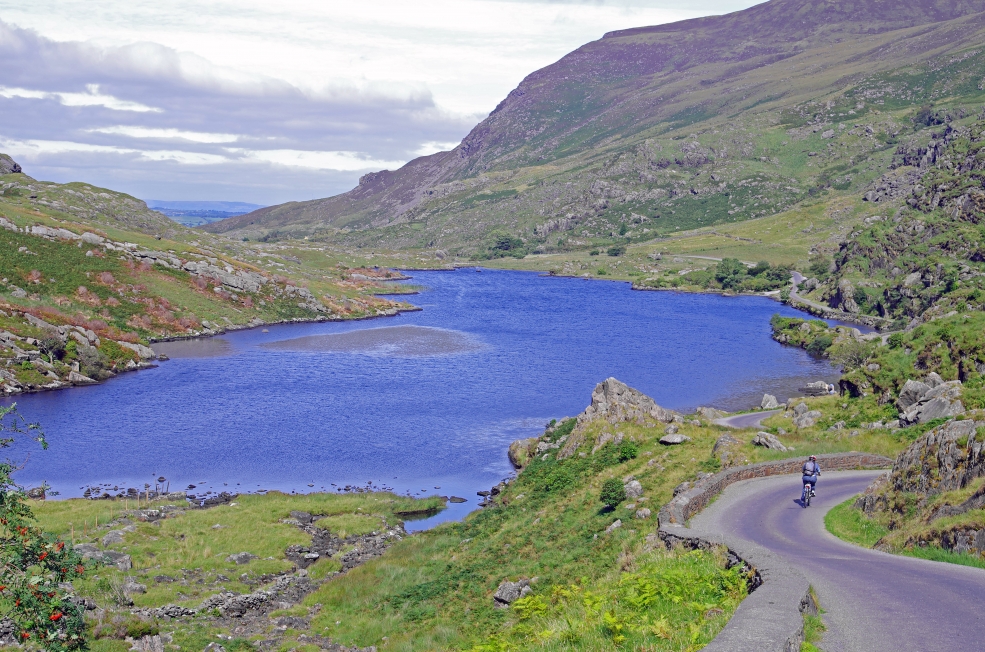
| Low Season | B&Bs | 3 * Hotel | 4* Hotel |
| Bed & Breakfast for 10 nights and Rental of an Economy Manual car | €641 pps | €913 pps | €1,075 pps |
| High Season | B&BS | 3* Hotel | 4*Hotel |
| Bed & Breakfast for 10 nights and Rental of an Economy Manual car | €839 pps | €1,215 pps | €1,399 pps |
*pps=per person sharing
Tour package Includes :
- Economy Manual vehicle eg., Ford Fiesta with unlimited mileage based on a minimum of 2 people travelling together. Inclusive of: Collision Damage Waiver (CDW), theft protection (TP), government tax (VAT) and Location Service Charge (upgrade rates for larger or automatic transmissions are available on request).
- Full breakfast daily except on day one
- All local taxes and hotel service charges
- Confirmation documents for each of your accommodations including driving directions
- All rates above are per adult sharing, child and single supplements apply
- Low Season- November-March
- High Season- April-October
Day 1 – Arrive Dublin
Welcome to Ireland and to Dublin, the capital City! Upon your arrival in Dublin, make your way to your overnight accommodation. Dublin is the capital of Ireland and one of Europe’s most vibrant cities , it is knee deep in history and has its own unique sense of humor.
The Dublin Hop on Hop Off Bus is an excellent way of visiting many of Dublin’s most historic locations .The all day ticket means you can hop on and off as often as you wish throughout the day allowing you explore the history and culture of Dublin at your leisure.
This evening, why not spend some time in the Temple Bar area. This small area boasts a dazzling choice of restaurants, cafes, bars and shops to suit all tastes and pockets, all within easy walking distance of Temple Bar’s many cultural centres and galleries. Its narrow cobbled streets are pedestrianised and are ideally suited to a leisurely stroll through the quarter. There is also the opportunity to experience an evening’s entertainment at any one of a number of excellent traditional Irish shows.
Day 2: Day Trip to Wicklow
Today you will be travelling south through County Wicklow, also known as the ‘Garden of Ireland’. First stop will be Powerscourt House & Gardens. Surrounding this 18th Century Palladian House in the foothills of the Wicklow Mountains, you will find a sublime blend of formal gardens, sweeping terraces, statuary and ornamental lakes together with secret hollows, rambling walks and over 200 varieties of trees and shrubs. Shortly after this, you will arrive at the ancient monastic settlement at Glendalough. Glendalough “the glen of the two lakes” is a truly spellbinding place – an ancient monastic settlement and two clear water lakes beneath the sheer cliffs of a deep valley, which was carved out by glaciers during the Ice Age. The monastic settlement has been a centre for pilgrims and visitors since its foundation by St. Kevin in the 6th century.
Day 3: Dublin to Cork via the Rock of Cashel
Your first stop today is the Rock of Cashel in County Tipperary. Cashel was once the seat of the Kings of Munster and capital of this southern province. The Rock, which rears above the plain, dominated the land routes southwards. Kings of Ireland as well as Munster came to this spot and St. Patrick is known to have preached on the rock and converted the local King, Aenghus, here in the 5th Century. Just 10 miles further on stop is Cahir Castle, once an important stronghold of the powerful Butler family, which retains its impressive keep, tower and much of its original defensive structure. It is one of Ireland’s largest and best-preserved castles. Just east of Cork City is the harbour town of Cobh. Cobh, situated on one of the world’s largest natural harbours, was the last port of call for the ill-fated Titanic in 1912 and was the closest port to the site of the sinking of the Lusitania in 1915. The heritage centre sympathetically recounts these events and tells the story of emigration from Ireland to the United States and Australia from the time of the famine in 1847 up to the 1950s – known as the Queenstown Story. Head to the vibrant Cork city and have dinner and drinks in one of the lively bars and restaurants.
Day 4: Day Trip from Cork city
Today drive along the East Coast stopping at The Old Midleton Distillery which is located in the town of Midleton, Co Cork A recommended restaurant in Midleton would be “Farmgate” in the town centre. The picturesque town of Youghal occupies a commanding position at the estuary of the river Blackwater. The town grew up along a strip of flat land beside the river where there was good access to the water at a defensible site. The earliest settlements in the Youghal area were probably small religious foundations. Just west of the present town is the oratory at Kilcoran, which may have been associated with the important monastery at Ardmore, 11km (7 miles) east of Youghal.
Day 5: Cork – Killarney
Today you will take a wonderful journey along the coast N71. (You can also take the direct route from Cork on the N22). You will be going in a south westerly direction through Bandon, Clonakilty, Rosscarbery and Skibbereen. From Skibbereen, travel north towards Bantry. Continue northwards via Ballylickey to Glengarriff, one of Ireland’s most beautifully situated villages. Glengarriff is one of the few remaining areas in Ireland which still has some of the original oak forest that covered the country. The area is of special interest to botanists because of the mild climate that it enjoys. Upon arrival in Killarney, check in to your accommodation and enjoy a well earned rest! In the evening take a stroll around the town, find a good restaurant for dinner and follow your ears to one of Killarney’s lively traditional music pubs such as Danny Manns or The Laurels.
Day 6: Full Day Tour of the Ring of Kerry, approx. 250km
Leaving Killarney, head for the Killorglin, which is famous for the Puck Fair pagan festival dating back 3000 years. Where else but in Ireland would a wild mountain goat be crowned King and reign over a town for three days? Killorglin – where a goat is King and people act the goat!
Next stop is Glenbeigh and its beautiful 3 mile sandy beach at Rossbeigh. Head back to the N70 to Kells or go over the mountain at Cahill’s pub ( cars only ) to join the N70. From the mountain stage there is a great view of Dingle bay, this is a good spot to stretch your legs and enjoy the view.
Leaving Caherciveen on your right hand side you can see Valentia Island. This is where the first Transatlantic Cable was laid all the way to America in 1857. You can also visit the Slate Quarry and the Light House where there are many remains of old structures including Stone Forts and Churches.
From Valentia drive back to the main road and head across the headland to Waterville. Continue along the coast road over the Coomakista Pass where there is a viewing point at 700ft (225m) above sea level affording spectacular views. Travel on through Caherdaniel and Castlecove to Sneem.
The final leg of the tour takes you through some of the most stunning scenery. From Sneem you drive through Parknasilla and Tahilla to Kenmare and then up the mountain road to the infamous Moll’s Gap and Ladies View where you will be treated to unrivalled views of the Killarney Valley. You will pass through the Killarney National Park , the Upper Lake and the Middle Lake before you get to Torc Waterfall on your right and then on to Muckross House and Gardens, well worth a visit and stretch those legs after a great day. The newest attraction back in Killarney town is the Irish Whiskey Experience. The Irish Whiskey Experience has been developed by whiskey lovers as a first class destination for whiskey enthusiasts and novices alike. It is a sensory and interactive experience that guides visitors through the history of Irish Whiskey, the distilling process and a comparative tasting of delicious Irish whiskeys. There are numerous masterclasses to choose from, to suit all occasions and palates.
Day 7: Killarney – Limerick
Todays journey is shorted and you will travel to Limerick city via the Village of Adare. Adare is regarded by many a seasoned traveller as Ireland’s prettiest village with its charming thatched cottages, manicured public park and ancient church. It is picture postcard perfect!
From Adare continue along the N20 towards Limerick City of ‘Angelas Ashes’ fame and home to King Johns Castle. If you have time you can travel the short distance to the Limerick/ Clare border to visit Bunratty Castle. Built in 1425, this majestic castle was restored in 1954 to its former medieval splendour. Within the grounds of the Castle is Bunratty Folk Park where 19th century Irish life is vividly recreated.
This evening, why not visit Dolan’s Pub, Dock Road, Limerick where there is traditional Irish Music every evening.
Day 8 Limerick – Galway via the Cliffs of Moher
While there is the direct route to Galway that will take just over 1 hour to drive, there is also a wonderful scenic route via the Cliffs of Moher and the Burren region of County Clare. The Cliffs lay claim to one of the most astonishing views in Ireland, on a clear day the Aran Islands are visible in Galway Bay as well as the valleys and hills of the Connemara region. The Cliffs of Moher rise from Hag’s Head to the south and reach their highest point (214 meters) just north of O’Briens Tower. There are over seventy megalithic tombs in The Burren region of County Clare, the most well known and most easily accessible being the Poulnabrone Dolmen Tomb. Radiocarbon dating suggests that the burials in this tomb took place 3800 and 3200 BC. The Burren lunar like landscape is an area of limestone rock covering imposing majestic mountains, and tranquil valleys with gently meandering streams. Next stop is Ireland’s Cultural Capital, Galway City. The pubs in Galway’s city centre are noted for their excellent traditional music. To the west of Galway is the hauntingly beautiful region of Connemara. Top attractions in this area include Kylemore Abbey, the National Park in Connemara and the Aran Islands with the spectacular pre-Christian clifftop fort of Dun Aenghus.
Day 9: Galway – Dublin
Todays journey to Dublin takes in some of Ireland’s most historical landmarks. First of these is the ancient monastic settlement at Clonmacnoise. This is an early Christian site founded by Saint Ciaran in the 6th century on the banks of the River Shannon and includes the ruins of a cathedral, eight, two round towers, three high crosses and a large collection of early Christian grave slabs. From here, we travel either to Dublin or take a slight detour to the megalithic tombs of Newgrange. One of the great wonders of the ancient world, Newgrange is older than Stonehenge, Mycenae or even the Pyramids of Egypt and is foremost among the passage-tombs of Europe. From here, we travel south to Dublin City. Upon arrival into Dublin return your hire car , as Dublin city centre is a compact area all points of interest are easily accessible on foot. As a result you will find a large number of walking tours available, the most popular of which include the “Historical Walking Tour” and the “Literary Pub Crawl.
Should you wish to arrive in Dublin earlier, you can travel from Limerick on the N18 to Gort and then onwards as described above. (time saved 2-3 hours)
Day 10: Dublin
Today you will be able to continue your sightseeing and you may wish to visit many of the sights in your own time either on foot or with the Hop-On-Hop-Off bus service that stops at all of the major attractions including Dublin Castle, Trinity Castle & the Book of Kells, Kilmainham Gaol, the National Museum of Ireland and The Guinness Storehouse to name just a few. Also whilst in Dublin visit the Jeanie Johnston Tall ship & Famine Museum situated at Custom House Quay in the city centre. The Jeanie Johnston Tall ship is an accurate replica of the original ship which sailed between Tralee, Co. Kerry and North America between 1847 and 1855. A tour of the ship enables visitors to understand what a daunting experience it was for the millions who left for North America during the famine, many never to return to the homeland.
No trip to the south would be complete without Dublin’s newest visitor attraction: EPIC Ireland. Over the centuries, some 10 million people have left the island of Ireland. EPIC Ireland tells the dramatic story of how these people have spread around the globe, and how they changed the world. Through 20 state-of-the-art galleries, visitors immerse themselves in the stories of some of the most remarkable tales of sacrifice, endurance, adventure, and discovery the world has ever known. Located in The chq Building in the heart of Dublin‘s docklands, EPIC Ireland brings these amazing stories to life in a unique and spectacular way, never experienced before.
For your final evening in Ireland, why not take in a visit to the Shindig night at the Old Jameson Distillery Your evening begins with a drinks reception and guided tour of the distillery. Guests may also join a whiskey tasting session. This relaxed evening includes Irish music and “craic” and also contemporary “Riverdance” style dancing, paired with a delicious meal.
Overnight in Dublin
Day 11:
Travel to the airport in Dublin for your return flight home.
Glendalough 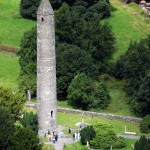
Glendalough is known for its spectacular scenery, rich history, archaeology and abundant wildlife. It is a remarkable place that will still your mind, inspire your heart and fill your soul. This early Christian ecclesiastical settlement was founded by St. Kevin in the 6th century. Set in a glaciated valley with two lakes, the monastic remains include a superb round tower, stone churches and decorated crosses. The Visitor Centre has an interesting exhibition and an audio-visual show.
Blarney Castle 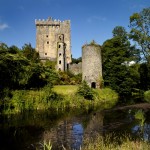
This historic castle is most famous for its stone, which has the power of conferring eloquence on all who kiss it. The word blarney was introduced into the English language by Queen Elizabeth I and is described as pleasant talk, intended to deceive without offending. The stone is set in the wall below the battlements and to kiss it, one has to lean backwards, (grasping an iron railing) from the parapet walk. Blarney Castle has long been famous because of the Blarney Stone but the less known Rock Close and castle grounds are well worth a visit in their own right. Many different gardens are to be found around the estat and exploration will be rewarded. There is a fern garden with the atmosphere of a tropical jungle to be found deep in the woods. The Poison Garden, adjacent to the battlements, contains an interesting and educational collection of deadly and dangerous plants from around the world, including caged specimens of deadly nightshade, wolfsbane and poison ivy. The Rock Close is a mystical place where majestic yew and oak trees grow around an ancient druidic settlement. Follow the trail through giant gunnera leaves and bamboo and you will find such features as a dolmen, wishing steps and a witch’s kitchen. A water garden with waterfalls adds the soothing sound of water to the visitor’s experience. There are pleasant walks along the riverbanks where you can sit and contemplate the reflections of the castle. In springtime the castle grounds are filled with thousands of bulbs and the ‘Belgian beds’, full of hybrid azaleas are in full flower. In autumn the whole place glows as the leaves turn red, amber and gold.
Cliffs of Moher 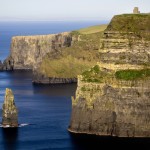
The Cliffs of Moher, one of Ireland’s top visitor attractions, loom high over County Clare’s west coast. Standing 214 metres at their highest point, the cliffs stretch for 8km along the Atlantic coastline. From the cliffs, one can see the Aran Islands, Galway Bay, The Twelve Bens, the Maam Turk Mountains in Connemara and Loop Head to the south. O’Brien’s Tower, another of Ireland’s most photographed landmarks, guards one prominent headland of these majestic cliffs. The Burren and Cliffs of Moher region of north Clare has been awarded the prestigious designation of membership of the UNESCO supported Global Geopark network at the 10th European Geoparks Conference in Langesund, Norway. This iconic location attracts close to one million visitors per year.
The unusual, underground visitor centre also houses the exciting Atlantic Edge display. This huge, domed cave contains images, exhibits and displays. The centre also has a gift shop stocking official Cliffs of Moher products, maps, guides, books and DVDs, visitor information and an accommodation booking service. Other facilities of this fully wheelchair accessible premises include a baggage store and ATM. Friendly staff will answer questions, provide assistance, give information on and directions to other attractions in the area
Muckross House & Gardens 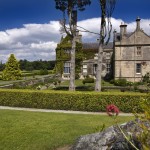
This magnificent Victorian mansion – one of Ireland’s leading stately homes – is situated amidst the spectacular scenery of Killarney National Park in County Kerry. The elegantly furnished rooms portray the lifestyles of the landed gentry, while downstairs in the basement you can experience the working conditions of the servants employed in the House back in the day.
Muckross House is also home to a number of skilled craftworkers, who can be seen using skills in the crafts of weaving, pottery and bookbinding. Many exotic trees and shrubs flourish in the mild climate and sheltered location of the Muckross gardens. Attractive features include a fine collection of rhododendrons and azaleas, an outstanding rock garden on a natural rock outcrop and beautiful tree-fringed lawns.
The Rock of Cashel 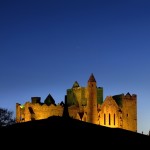
The Rock of Cashel is on a rocky plateau that rises 300 feet above the surrounding plain known as the Golden Vale of Tipperary. The name Rock of Cashel comes from the Gaelic “caiseal” which means “stone fort,” and it has been a known fortified position since the forth century of the Common Era.
From this promontory much of Country Tipperary is visible for miles, making it an ideal place for a fort or strong hold owing to the fact that a defender could see an enemy force approaching from any direction. Today, the visitor turning away from the magnificent view comes face to face with a maze or labyrinth of the remains of an ancient church open to the sky and weather, foundation stones of old buildings, tombstones, a ninety foot high stone tower and archways leading nowhere.
Although occupied since the fourth century, the visible ruins that one sees today only date to the twelfth and thirteenth centuries. The oldest edifice on the Rock that is still standing is a round tower of fitted stones, without mortar, built in 1101. Recently the base had to be reinforced with mortar to stabilize it. Such towers, which can be seen throughout Ireland, served as both watch towers and shelter from Viking raiders. The first floor entrance, reached by a ladder which could be pulled up in the event of attack, was twelve feet above the ground.
